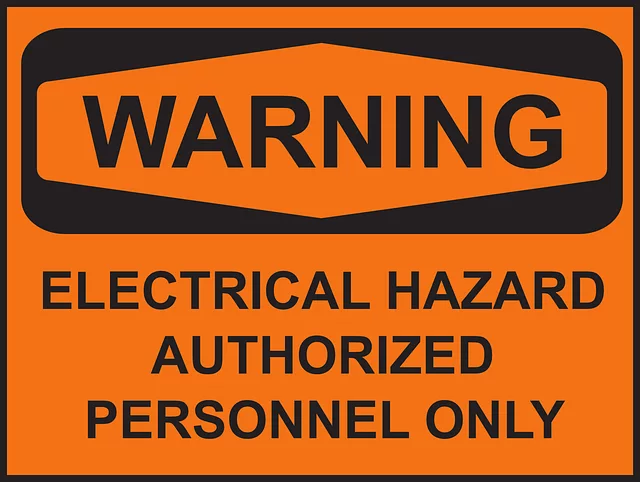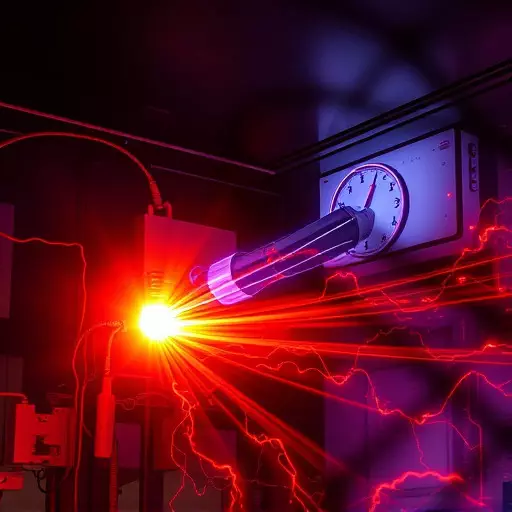An arc flash hazard analysis (AFHA) is a critical process for identifying and mitigating risks associated with electrical systems, focusing on high-risk areas. By assessing work areas, equipment, and processes, organizations can implement targeted strategies using modern technologies like smart sensors, machine learning, and automated systems for real-time monitoring. Effective AFHAs ensure compliance, protect workers through tailored training and controls, and minimize exposure to hazardous energy. Key factors in minimizing arc flash hazards include equipment design, system configuration, and strategic placement of protection devices. Regular employee training on arc flash safety and adherence to standards like NFPA guidelines are essential for operational efficiency and worker safety. Future advancements in data analytics, AI, VR, and AR promise even more accurate risk prediction and enhanced training experiences.
In today’s industrial landscape, understanding and mitigating arc flash hazards is paramount for electrical safety compliance. This article explores trends in arc flash prevention technology, delving into critical aspects such as arc flash hazard analysis, identifying risks and potential sources, traditional vs. advanced risk reduction methods, equipment design strategies, effective protection systems, training, regulatory standardization, and future innovations. By examining these key areas, we aim to equip folks with insights into the latest advancements in electrical safety, fostering a safer environment for all.
- Understanding Arc Flash Hazard Analysis: Identifying Risks and Potential Sources
- Traditional Methods vs. Advanced Technologies for Risk Reduction
- The Role of Equipment and System Design in Minimizing Arc Flash Hazards
- Implementing Effective Arc Flash Protection Devices and Systems
- Training and Education: Ensuring Proper Handling and Awareness
- Regulatory Compliance and Standardization in Electrical Safety
- Future Trends: Innovations Shaping Arc Flash Prevention Technology
Understanding Arc Flash Hazard Analysis: Identifying Risks and Potential Sources
Arc flash hazard analysis is a critical process for identifying and mitigating risks associated with electrical systems. It involves a thorough assessment of work areas, equipment, and processes to understand potential sources of arc flash hazards. By conducting this analysis, organizations can pinpoint high-risk areas, such as locations with high voltage or frequent equipment failures, where arc flashes are more likely to occur. This proactive approach enables the implementation of targeted strategies for arc flash risk reduction.
Effective hazard analysis considers various factors, including the type and age of electrical systems, work practices, personal protective equipment (PPE), and existing safety protocols. By identifying these risks, facilities can ensure electrical safety compliance and implement measures to protect workers from severe injuries caused by arc flashes. This includes proper training, engineering controls, and administrative procedures tailored to minimize exposure to hazardous energy.
Traditional Methods vs. Advanced Technologies for Risk Reduction
In the realm of arc flash prevention, traditional methods have long been the cornerstone of electrical safety compliance. These include routine inspections, proper maintenance, and employee training to identify potential hazards. However, with evolving technology, advanced solutions are emerging to significantly enhance arc flash risk reduction strategies. Traditional approaches, though effective, often rely on manual processes and reactive measures. In contrast, modern technologies offer proactive, real-time monitoring and control capabilities.
Advanced technologies such as smart sensors, machine learning algorithms, and automated systems enable continuous arc flash hazard analysis, identifying anomalies and potential risks far quicker than human assessment. This shift from traditional methods to advanced technologies promises not only improved electrical safety compliance but also a more dynamic and responsive approach to managing arc flash hazards in industrial settings.
The Role of Equipment and System Design in Minimizing Arc Flash Hazards
Equipment and system design play a pivotal role in minimizing arc flash hazards, which is crucial for electrical safety compliance. A thorough arc flash hazard analysis (AFH) should be conducted to identify potential risks associated with electrical equipment and systems. This involves assessing the characteristics of electrical components, such as voltage, current, and circuit configuration, to determine the energy released during an arc event. Based on this analysis, designers can implement strategies for arc flash risk reduction.
One approach is to incorporate safety features like arc detection systems, which can quickly shut down power in the event of an arc flash. Additionally, using suitable insulation materials, ensuring proper clearance distances between live parts, and employing equipment with enhanced safety mechanisms can significantly reduce the likelihood and severity of arc flashes. These design considerations are essential in creating a safer working environment for personnel, thereby adhering to electrical safety standards and regulations.
Implementing Effective Arc Flash Protection Devices and Systems
Implementing effective arc flash protection devices and systems is a critical step in mitigating the significant risks associated with arc flashes. These hazardous events, often occurring during electrical work or equipment failures, can lead to severe injuries and property damage. By conducting a thorough arc flash hazard analysis, organizations can identify potential triggers and implement tailored risk reduction strategies. This involves assessing the electrical system, understanding equipment ratings, and determining appropriate protective devices like circuit breakers, relays, and suppressors.
Electrical safety compliance is paramount in ensuring these systems function optimally during an arc flash event. Advanced technologies such as intelligent protection relays and real-time monitoring systems play a pivotal role in early detection and response. These innovations allow for precise coordination of protective devices, minimizing false trips while ensuring swift reaction to hazardous conditions. As industry standards evolve, staying abreast of the latest arc flash prevention technologies is essential for maintaining a safe and compliant electrical infrastructure.
Training and Education: Ensuring Proper Handling and Awareness
Training and education play a pivotal role in mitigating arc flash hazards within industrial settings. Organizations should prioritize comprehensive training programs that educate employees on recognizing and handling potential arc flash risks. This includes conducting regular arc flash hazard analyses to identify vulnerable areas and implementing strategies for arc flash risk reduction. By fostering awareness, workers can proactively take safety measures, such as using appropriate personal protective equipment (PPE) and understanding the correct response during an arc flash event.
Effective training should cover electrical safety compliance standards and guidelines specific to their industry. It empowers employees to identify potential risks, adhere to safety protocols, and ensure a safer working environment. Regular updates on safety procedures and advancements in arc flash prevention technology further contribute to a culture of safety, minimizing the likelihood of accidents and promoting long-term operational efficiency.
Regulatory Compliance and Standardization in Electrical Safety
The electrical industry’s commitment to worker safety has led to significant advancements in arc flash prevention technology. Regulatory bodies and standards organizations play a pivotal role in this progress by establishing guidelines for identifying, assessing, and mitigating the arc flash hazard. Conducting thorough Arc Flash Hazard Analyses (AFHAs) is now mandatory in many jurisdictions, ensuring that facilities implement appropriate control measures to reduce risks. These analyses involve evaluating electrical systems, determining potential sources of arcing, and classifying them based on their energy levels.
Standardization in electrical safety protocols has been a game-changer, providing consistent frameworks for implementing arc flash risk reduction strategies. Organizations like the National Fire Protection Association (NFPA) offer comprehensive guidelines, such as NFPA 70E, which details best practices for electrical worker protection. By adhering to these standards, companies can ensure compliance with electrical safety regulations and create safer work environments. This standardization facilitates a more uniform approach to managing arc flash hazards across industries.
Future Trends: Innovations Shaping Arc Flash Prevention Technology
The future of arc flash prevention technology promises significant advancements driven by innovations in data analytics and artificial intelligence (AI). These breakthroughs enable more sophisticated arc flash hazard analyses, allowing professionals to predict and mitigate risks with unprecedented accuracy. By leveraging machine learning algorithms, systems can adapt to changing work environments, identify anomalies, and continuously refine risk assessment models. This proactive approach ensures electrical safety compliance, not just for today’s standards but also for the evolving demands of tomorrow.
Additionally, virtual reality (VR) and augmented reality (AR) technologies are set to revolutionize arc flash training programs. These immersive experiences offer hands-on learning scenarios without the inherent risks associated with live demonstrations. AR can overlay critical safety information onto real-world environments, enhancing on-site awareness and response capabilities. Similarly, VR simulations enable employees to practice emergency procedures in controlled, risk-free settings, fostering preparedness and confidence in handling arc flash incidents. Such innovations not only enhance electrical safety compliance but also contribute to a culture of continuous learning and improvement within organizations.


